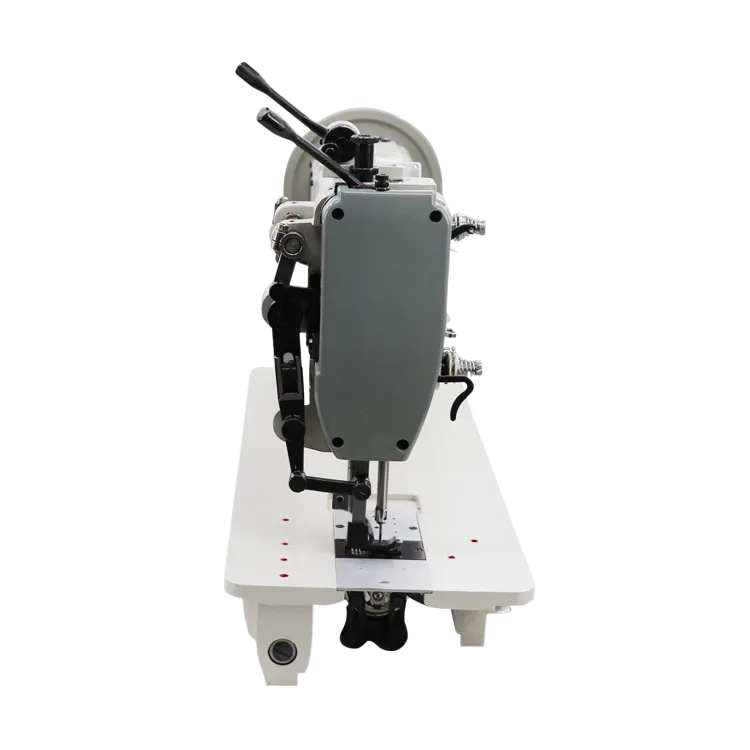Sewing Machines Designed for Heavy Fabrics and Thick Materials
Choosing the Right Sewing Machine for Thick Fabrics
Sewing enthusiasts know that having the right tools can make all the difference in producing high-quality garments and projects. When it comes to working with thick fabrics, whether they be denim, canvas, leather, or multi-layered quilts, a standard sewing machine might struggle to deliver the desired results. This article explores the essential features and considerations for selecting a sewing machine capable of handling thick fabrics with ease.
Understanding Thick Fabrics
Before diving into the specifics of sewing machines, it's crucial to understand what qualifies as thick fabric. Materials like denim, upholstery fabric, leather, and heavy cotton require more power and specialized settings for successful sewing. These fabrics often present challenges such as needle breakage, skipping stitches, or difficulties in feeding through the machine. Thus, a sewing machine designed for these materials must incorporate features that mitigate these challenges.
Key Features to Look For
1. Powerful Motor One of the first things to look for in a sewing machine that can handle thick fabrics is the motor's power. Machines with stronger motors provide the necessary torque to sew through multiple layers without strain. A machine with at least 1 amp of power is recommended for heavy-duty projects.
2. Adjustable Presser Foot Pressure A presser foot that can be adjusted allows you to set the right pressure for different fabric thicknesses. This feature is vital when transitioning between lighter and heavier fabrics to ensure consistent feeding and stitching quality.
3. High-Quality Needles Thick fabrics require specific needles, such as heavy-duty or leather needles. A sewing machine that accommodates these needle types will be beneficial. It's also wise to have a variety of needle sizes on hand to match the fabric weight.
sewing machine that can sew thick fabric

4. Walking Foot A walking foot is an essential attachment for sewing thick layers. It helps in feeding multiple layers of fabric evenly through the machine, preventing puckering or shifting, particularly when quilting or working with heavy upholstery.
5. Wide Throat Space The throat space (the area between the needle and the body of the machine) is crucial when working with large, bulky projects. A wider throat space allows for easy maneuverability and better handling of thick fabrics like quilts or large upholstery pieces.
6. Stitch Options Look for machines with a variety of stitch options, including straight, zig-zag, and decorative stitches. Some projects may require different stitch types to ensure thorough reinforcement of seams, especially in thicker materials.
7. Durability A sewing machine built with a sturdy metal frame will withstand the vibrations and stress that come with sewing thick fabrics. Plastic frames may flex or warp under pressure, ultimately leading to misalignment and inconsistent stitching.
Popular Machines for Thick Fabrics
Several sewing machines stand out in the market for their ability to handle thick materials. Brands like Singer, Brother, and Janome offer robust models specifically designed for heavy-duty sewing. The Singer Heavy Duty 4423 and the Janome HD3000 are popular among sewists for their strong motors and adjustable features.
Conclusion
Choosing the right sewing machine for thick fabrics is a critical step for any sewing enthusiast looking to tackle challenging projects. By considering factors such as motor power, presser foot pressure adjustment, and overall durability, sewists can invest in a machine that will serve them well for years to come. With the right tools in hand, the possibilities for creating beautiful, high-quality items from thick fabrics are endless. Happy sewing!
-
Heavy Duty Leather Sewing Machine: A Must-Have for Professional LeatherworkNewsMay.28,2025
-
Leather Sewing Machine: Essential for High-Quality LeathercraftNewsMay.28,2025
-
Extra Heavy Duty Sewing Machine for Premium Leather ApplicationsNewsMay.28,2025
-
Walking Foot Cylinder Arm Sewing Machine: Precision and Power CombinedNewsMay.28,2025
-
Industrial Cylinder Arm Sewing Machine: Engineered for High-Performance StitchingNewsMay.28,2025
-
Cylinder Bed Sewing Machine: A Powerful Solution for Precision StitchingNewsMay.28,2025
-
Zigzag Sewing MachineNewsMay.12,2025





























